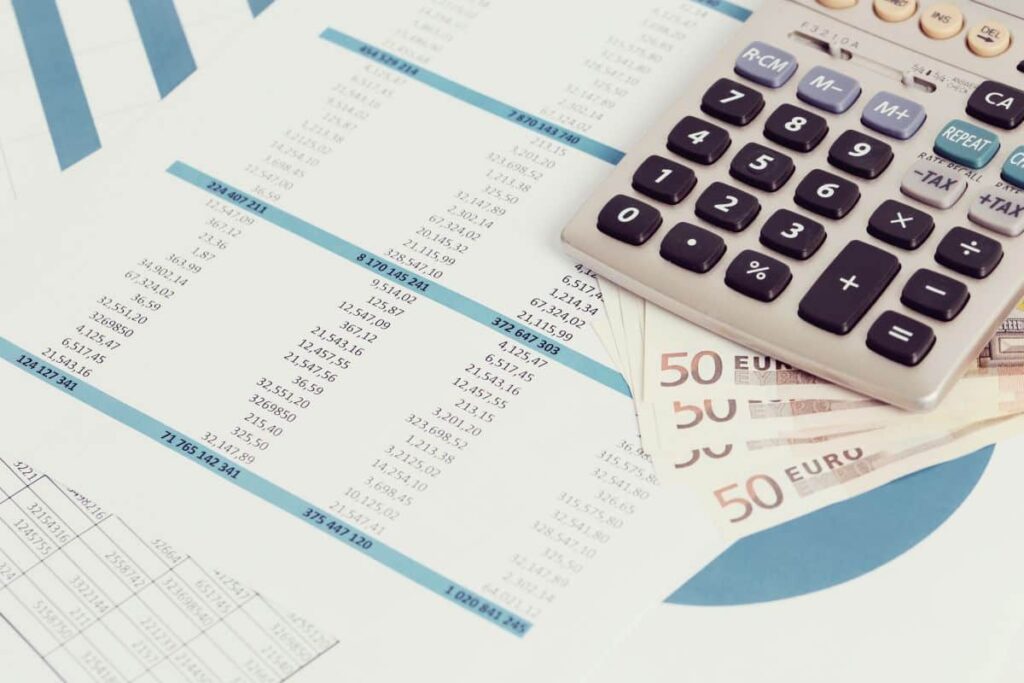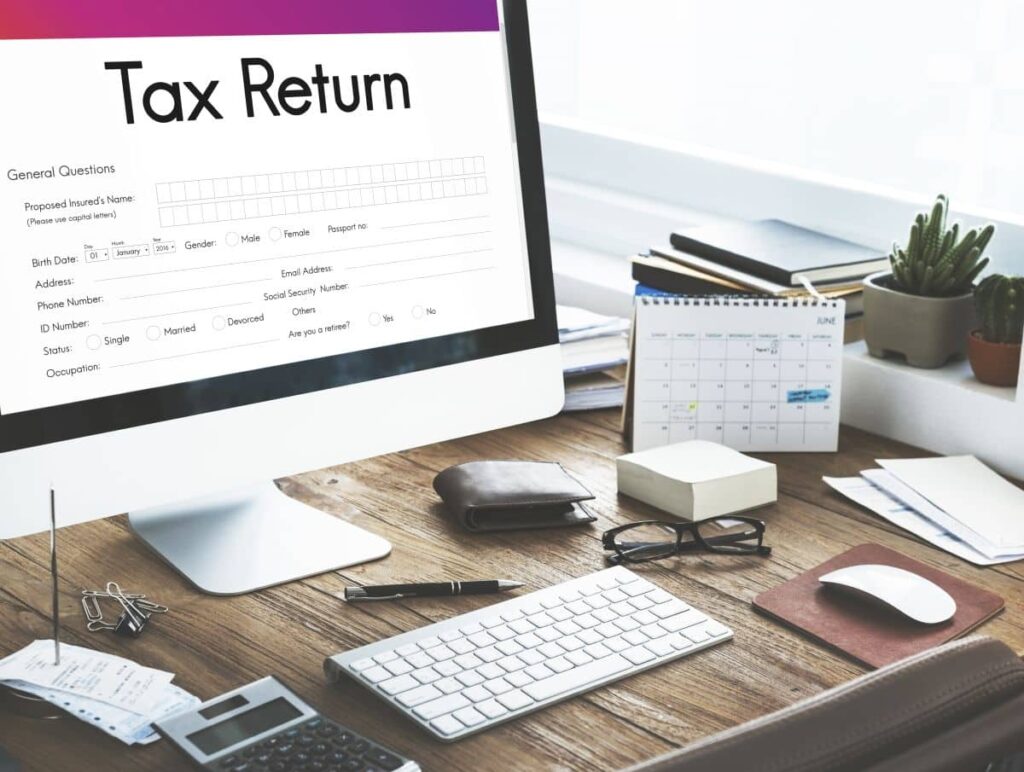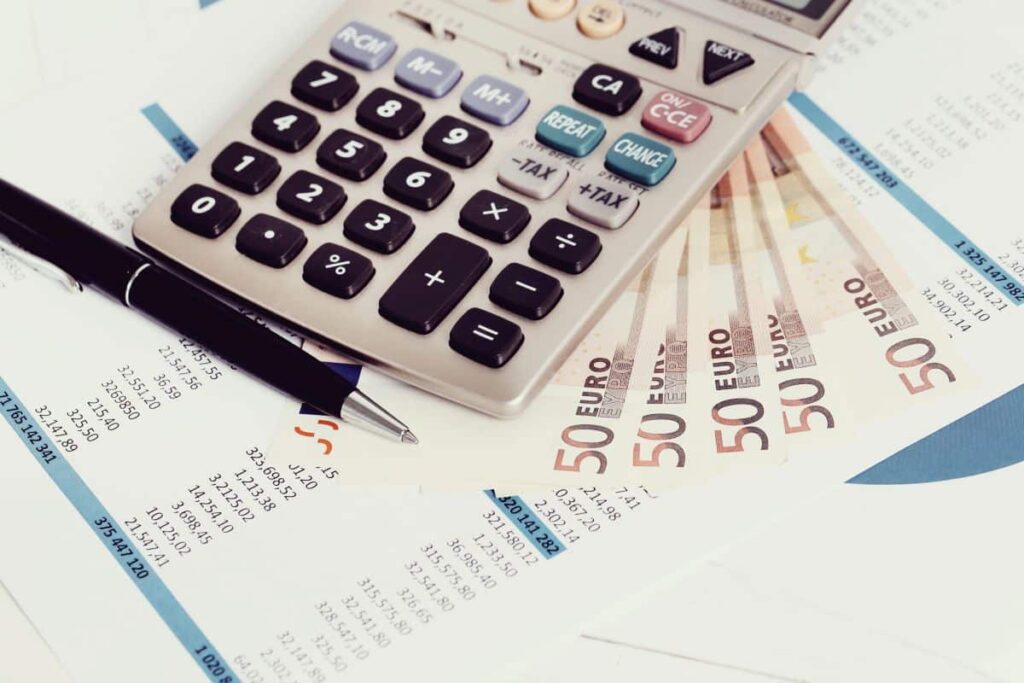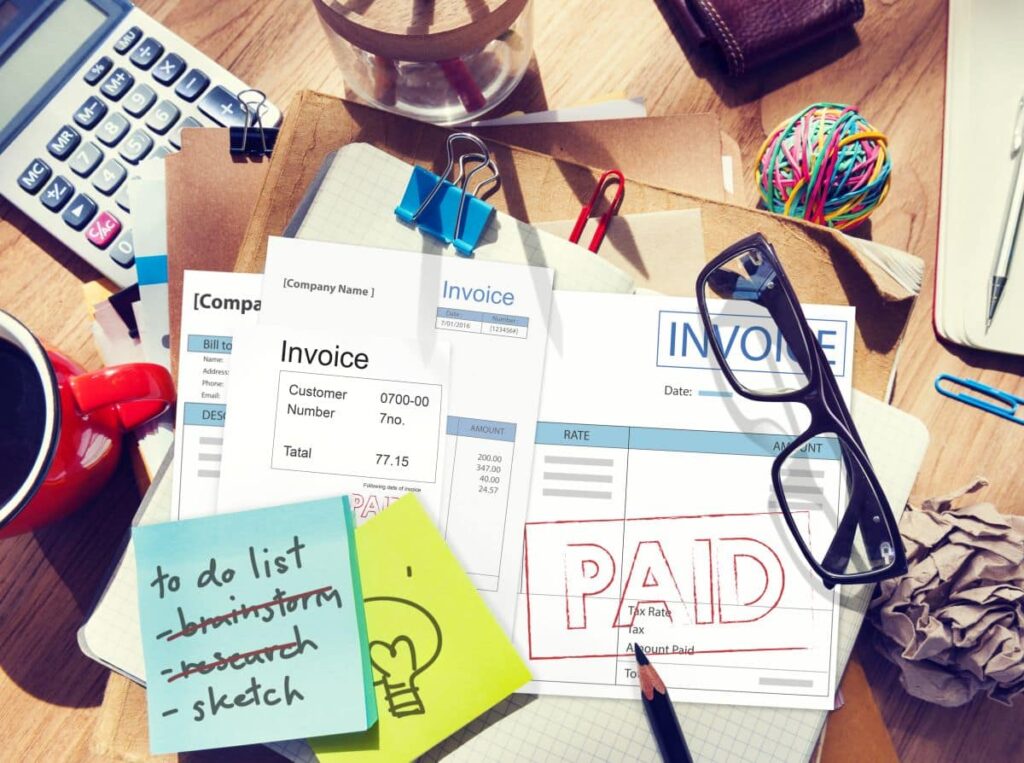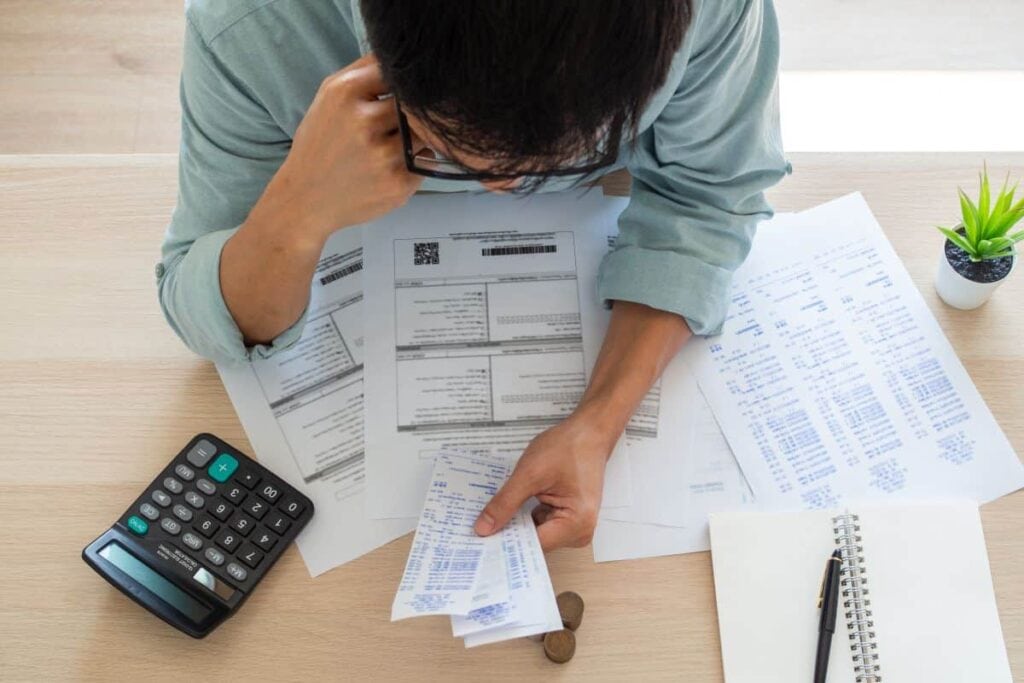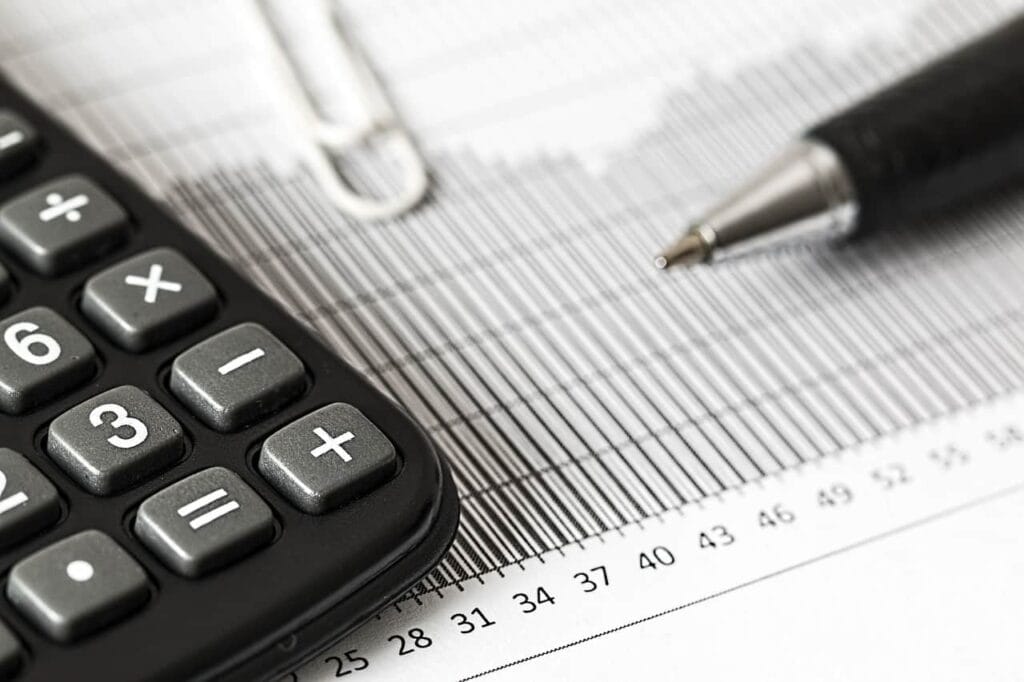As a landlord, understanding the intricacies of taxation can be daunting. However, you want to follow all applicable laws and make sure that you take advantage of all tax savings opportunities while also avoiding any unexpected penalties or liabilities.
Fortunately, with this detailed tax guide for landlords, we will walk you through all the important factors related to your taxes. Not only will you gain an understanding of what types of revenue are subject to taxation and how to balance deductions and credits against income properly, but also specific tips for staying organised throughout the year so that filing does not become a burden at the end of it.
By following these guidelines, your time spent dealing with taxes as a landlord should become easier than ever before!
Let's get started!
Rental Income
Rental properties can generate one of three different sources of income:
- Rental income derived from either a conventional residential lease or a vacation let on a shorter duration;
- Reimbursements made by tenants for the cost of utilities, water use, and any damage they may have made to the property;
- Payouts from insurance policies for lost rent
Everything counts as taxable income.
If a residence is owned jointly by more than one person, then the rental income and costs must be split among the co-owners in proportion to their respective shares of the property's legal ownership. The co-ownership of the property might be direct and recorded under the names of the individuals, or it could be indirect and recorded under the names of a corporation or a unit trust.
If one co-owner pays a larger share of the expenses or wants to obtain a lower share of the profits for tax purposes, is it possible for the co-owners to decide to divide the income and costs in any other way?
Regrettably, that cannot be done without first transferring ownership, which necessitates the payment of stamp duty, as well as legal expenses and capital gains tax on the transaction. The one and only exemption to this rule is if they own a number of properties and actively manage those properties as part of a rental property management enterprise.
When purchasing an investment property for this reason, a great deal of caution is required in selecting the appropriate ownership structure for the property.
Rental Expenses
All costs associated with renting property can be deducted from a landlord's taxable income. However, how these deductions are taken depends on which of the following five categories the item falls into:
- Expenses related to property ownership
- Expenses related to property management
- Costs associated with loans and interest on loans
- Deductions for depreciation, often known as value loss
- The deductions for capital works
1. Expenses Related To Property Ownership
Having a home of your own comes with some responsibilities and costs. If the home is used for renting out rooms, then all of the costs associated with maintaining it are tax deductible. They are as follows:
- Rates for the local government and councils
- Tariffs, levies, and costs for water and sewage services
- Insurance, building contents, public responsibility, loss of rent, and malicious damage are some of the things that need to be considered.
- Strata levies, but not additional levies for major works of capital improvement
- Tax on Land
2. Expenses Related to Property Management
The following types of costs are classified as property management expenditures:
- Lease preparation expenses, statement fees, annual fire protection checks, pest control, marketing and letting costs for new rentals, property management costs for collecting rent and audits, evicting renters, clearing up the property, and getting rid of abandoned items are all associated with renting a property.
- Maintenance and repairs: If an expenditure is for repairs and maintenance, it is entirely tax deductible in the year that it was incurred, provided that the rules are fulfilled in the letter.
- Tax matters: The costs associated with the management of tax matters, such as bank fees, bookkeeping charges, stationery, telephone and mailing costs, and other tax-related costs, are deductible.
- Seminars: If the seminar relates to operating or maximising the return on existing held buildings, then the price of the session is deductible as an expense related to property investment. When you are trying to purchase your first home, you cannot deduct these expenses.
The most controversial claims are those for repairs and maintenance since the landlord wants to label everything as such to obtain an instant tax deduction. In contrast, the ATO wishes to label everything as such to claim a deduction over a period of time. Here are a few guidelines:

- What exactly is a repair? The wear and tear that occurs on the property while it is being rented should be taken into consideration while making repairs. Roofing repairs to restore broken tiles and flashing, glazing repairs to replace broken window glass, blind or shutter repairs to restore cords and slats, and floor repairs to patch or replace broken floor tiles, torn carpet, or hardwood flooring are a few examples of repairs that might be necessary. In the year that the payment was made, the cost can be deducted in its entirety from your taxes.
- When should I call it a replacement, and when should I call it a repair? It is considered a repair when a broken or faulty element on the stove is replaced with a new element, while it is considered a replacement when the stove itself is replaced. A dishwasher and an air conditioning unit are both subject to the same rules. The cost of purchasing a new appliance can be deducted from your taxes as an expense for depreciation over time.
- What exactly is an advancement? It is an upgrade if an entire building or unit is changed out for a new one. For instance, a new built-in wardrobe or kitchen cabinet may be erected rather than replacing a broken hinge or a broken panel in a built-in wardrobe or kitchen cabinet. It makes no difference whether the harm was brought about by a renter or a third party, like when it was brought about by water damage. The new built-in closet in the kitchen or the wardrobe is an example of an upgrade that qualifies for a tax deduction as a capital work expense rather than a depreciation one.
- What does it mean to maintain? Maintaining a property in a condition that is suitable for renting out is referred to as maintenance. For instance, repainting the room, pruning the trees, mowing the yard, washing the gutters and drains, steam washing the rugs, and doing maintenance on the air conditioner. In the year that the payment was made, the cost can be deducted in its entirety from your taxes.
- Initial repairs really need to be eligible for reimbursement. When a home is bought and repaired before it is rented out for the first time, the expenditure is considered a capital cost. It isn't tax deductible because it occurred before the property was occupied by tenants. Because the property's state and level of repair are reflected in the sales price, it bears the characteristics of a capital investment.
Inspecting your property on a regular basis is a smart idea if you are the owner of the property. However, up until the year 2017, a taxpayer was able to deduct the cost of travel and lodging associated with these inspection visits from their taxable income.
But no longer. Because landlords were exploiting this tax advantage in order to pay for vacations on the shore, like on the Gold Coast, the government decided to do away with it. Take note that the owner can claim reimbursement for travel costs if they own a firm that lets out rental units.
3. Costs Associated with Loans and Interest on Loans
The costs of getting a loan are tax deductible over a period of five years, with one-fifth of the total deduction allowed each year. If the loan is for a duration of less than five years or if it is paid off in a period of less than five years, then the costs of the loan may be deducted over the period that is shorter.
When they are actually paid, annual loan fees, loan payout costs, and mortgage discharge expenditures are all fully deductible.
Loan interest. The loan repayments for a typical mortgage or investment loan are broken down into principal and interest and stretched out over a period of thirty years. Only the interest portion of the payment can be deducted from taxes. Because of its capitalistic nature, the principal contributes to the reduction of the loan balance but cannot be deducted from taxes.
If you want to deduct the interest on your taxes, the loan must be used to buy, improve, or otherwise acquire a rental investment property. Only then will the interest be deductible. In addition, the interest on a loan is deductible for tax purposes if it is utilised to finance or reimburse the costs of renovating, repairing, or improving a rental investment property.
However, the loan isn't utilised for a rental investment property but for a private purpose like purchasing a motor vehicle, purchasing or renovating the taxpayer's residence, or paying for a vacation. In that case, there is no tax deduction accessible for the interest or for the loan expenditures on that loan. This also applies if the property no longer qualifies as a rental investment property.
Suppose a loan is utilised partly for the rental investment property and in proportion for personal reasons. In that case, the interest on the loan must be allocated, and the amount of the interest that is traceable to the rental investment property must be deducted from the taxpayer's taxable income.
The proprietor of an investment property incurs a loss on the property if the net rental revenue (that is, gross rent less rental expenses) generated by the property is lower than the amount of interest that must be paid on the mortgage for the property. This phenomenon is referred to as negative gearing. This loss may be deducted from the proprietor of the property's other income, like their wage, in order to reduce the owner's overall taxable income.
4. Depreciation (Loss Of Value) Deductions
The Australian Taxation Office, also known as the "ATO," acknowledges that the useful lives of things like appliances, flooring, and window coverings can range anywhere from 5 to 20 years.
Depreciation, a type of allowance for the loss of value of these things over the course of their effective life, is permitted by the Australian Taxation Office (ATO). However, either they should be mechanical, or they require to be detachable (that is, not permanently fixed to the structure).
Examine what components of a kitchen, a bathroom, a bedroom, and a living room are subject to depreciation. The prime cost method is the method of depreciation that is employed, and the rate that is utilised for depreciation is the prime cost method.
The prime cost method is the method of depreciation that is used when the value of the rental property asset declines homogeneously by a fixed percentage of the expense over its useful lifetime.
5. Capital Works Deductions
The term "capital works" refers to the process of constructing or renovating a building.
For instance, whether you construct a home, add an addition to an existing home like a room, garage, patio, or pergola, or substantially alter a piece of property by knocking down an interior wall. But, of course, this also applies to upgrades and assets that are placed in place forever.
Capital works include nearly all of the components that go into outfitting a bathroom, including the tiling on the floor and walls, the vanity, the toilet, the shower fittings and screen, and the lights.
The kitchen cabinets, the kitchen countertops, the kitchen sink, the tap fittings, and the splashback are all considered capital works in a kitchen. The constructed closets and window shutters that come standard in a bedroom are two examples of capital works.
For investment properties, the Australian Taxation Office (ATO) grants a tax deduction for capital improvements equal to 2.5% of the cost per year, spread out over a period of 40 years after the capital works have been finished. The tax deduction will be forfeited if it isn't claimed during the time period in which it is allowed.
If the precise figures for the building costs are not available, a Quantity Surveyor can develop a Tax Depreciation Schedule for the client that provides an approximation of the costs. Then, as a cost of managing your tax affairs, you can deduct the whole amount of the Schedule's cost from your income tax return for the year in which it was spent.
In the event that the building is damaged or destroyed, the amount of money that must still be deducted for capital works is tax deductible. This is true even after the proceeds from any insurance policies have been credited.
In contrast to deductions for depreciation, deductions for capital works will result in a lower cost base when it comes time to calculate the capital gains tax on the sale of the investment property.
Tax Tips For Landlords
1. Get your fundamentals in order
If you are the owner of a rental property, every income you earn from that property is subject to taxation. Nevertheless, a significant portion of the costs you pay for your rental property qualify as tax deductions. Therefore, to earn revenue, you have to incur expenses that can be deducted from your taxes.
Negatively geared is a wide word that refers to a situation in which the costs associated with your property, such as the mortgage and interest payments, are greater than the revenue you receive from rent. On the other side, your property is said to be favourably geared when the income generated by it is greater than the costs that it incurs.
You are allowed to deduct the loss from any other income you bring in if you own a property that has a negative equity ratio. Therefore, when you file in your tax return as a landlord and report a loss from using negative gearing, you will typically be eligible for a larger tax refund. This is one of the advantages of using negative gearing.
According to recent figures, over 1.9 million people in Australia had rental income, and over 1.3 million of those people were in negative equity.
2. To maximise your potential tax savings, you might want to prepay your interest
You have until June 30 to prepay interest and other charges in order to be eligible for the deduction in the fiscal year 2022-23. This is especially helpful if you anticipate earning a lower salary the following year; for example, if you plan to take maternity leave, work fewer hours, or retire during the following fiscal year.
In accordance with the tax office, the largest tax deduction available to property investors is for the interest paid on loans. Other costs, such as those associated with a tax depreciation schedule, strata fees, and insurance premiums, are all eligible for prepayment.
3. Make sure that all of your documentation is current and in order
Every single penny that you assert must be backed up by documentation. Performing this action could also expose some deductions of which you were previously unaware.
4. If you do not yet have a depreciation schedule, you should talk to a quantity surveyor about creating one
You can make a claim for the normal wear and tear that occurs throughout age on the majority of investment properties, whether they are new or old. In essence, it acknowledges that the structure itself, as well as the furniture and fittings within it, will experience wear and tear over time and will, at some point, require replacement.
A depreciation schedule is a document that includes all of the necessary information to calculate the appropriate amount of compensation for the wear and tear that has occurred to your property and the fittings within it.
Several investors will discover that claiming depreciation results in deductions that are worth hundreds of dollars per year. You are also permitted to submit a claim for a deduction for the money that was spent on the depreciation schedule. If you did not claim depreciation when you should have, it is possible to correct this mistake by amending the tax returns you filed for the two years prior.
5. Don't try to get what you have no right to
One of the most typical errors involves attempting to deduct early capital improvements or repairs as an immediate expense. Initial repairs to help fix destruction, deformities, or degradation that were present at the time of acquiring a home are normally regarded to be of a capital nature and aren't deductible, even if you managed to carry them out to make the property appropriate for renting.
This expense could qualify for a capital works deduction in the form of depreciation, which could be claimed over a period of forty years.
And investors who purchased a used residential real estate on or after May 10, 2017, but which contained "previously used" equipment like ovens, dishwashers, and blinds, are no longer eligible to claim depreciation on those "previously used" items in the building.
Once the plant and equipment starts generating income, you will be able to claim depreciation on any brand-new plant and equipment that you acquire and place in the building.
6. You must properly allocate costs

Make sure that you accurately divide costs between using the property for your own purposes and renting it out. Some examples of this would be holiday houses or even renting out a portion of your own residence for a shorter or longer period of time.
For instance, if your vacation house is truly available to be rented for nine months out of the year (you are required to be capable of showing proof of this), you are eligible to deduct three-quarters of the costs associated with maintaining the property, which includes the interest on your mortgage.
7. Keep an eye on your cash flow
Cash flow is a significant issue for certain investors, particularly those whose homes are negatively geared.
For this, you will be required to submit an application to the ATO, and you should exercise caution when calculating your taxable income for the year, as there may be consequences if you are too low in your estimate.
Among the costs that could potentially qualify for an immediate tax deduction in the same tax year that they were incurred by you are the following:
- advertising for tenants
- body corporate fees and charges
- cleaning
- council rates
- gardening and lawn mowing
- insurance (building, contents, public liability)
- interest expenses
- land tax
- pest control
- property agent's fees and commission
- repairs and maintenance
- water charges
- quantity surveyor schedule.
8. Keep precise records
When it comes time to file your taxes, you will be relieved of a significant amount of stress if you have precise and up-to-date records of all of the costs associated with your rental property because these documents will assist you in proving your claims.
Employing the services of an online record-keeping system will promise to be an invaluable resource for landlords, as it will assist in the organisation of data and correspondence and ensure that your tax return is processed as smoothly as is humanly feasible.
Frequently Asked Questions
- The money must have been spent by you and not have been reimbursed by your employer;
- The expense must directly relate to earning of income; and.
- You must be able to prove the expense by having a record such as a receipt.
Records are written evidence of your income or expenses, these can be either paper or electronic. You need to keep records that support the claims you make in your tax return. For most expenses you need a receipt or similar document from the supplier.

